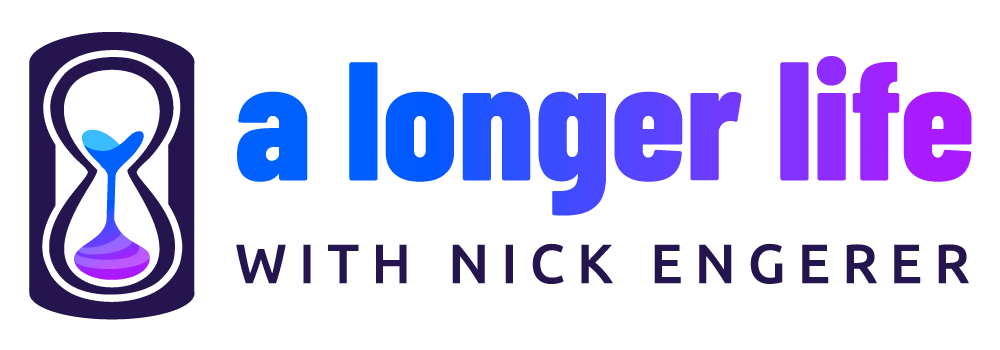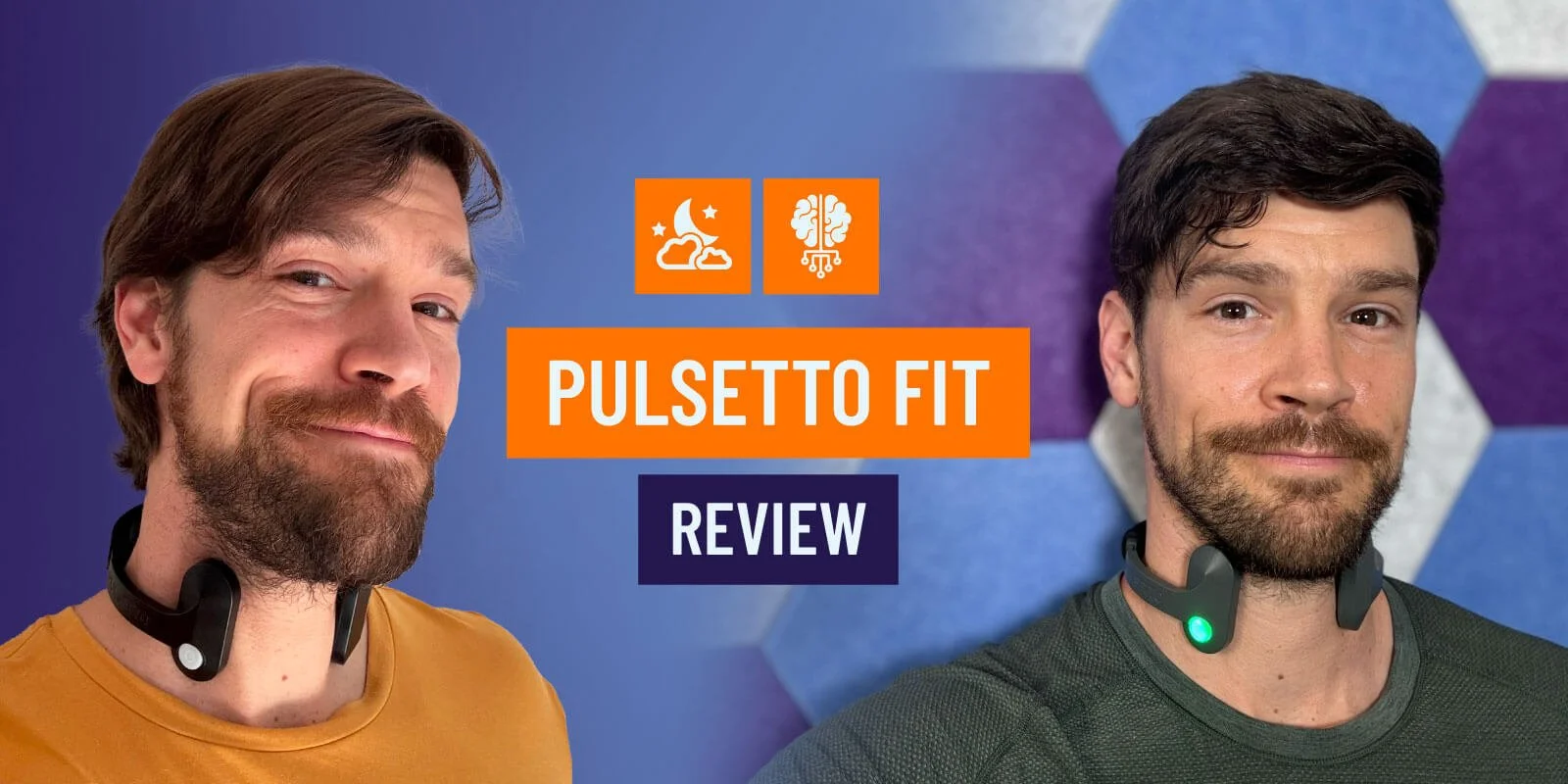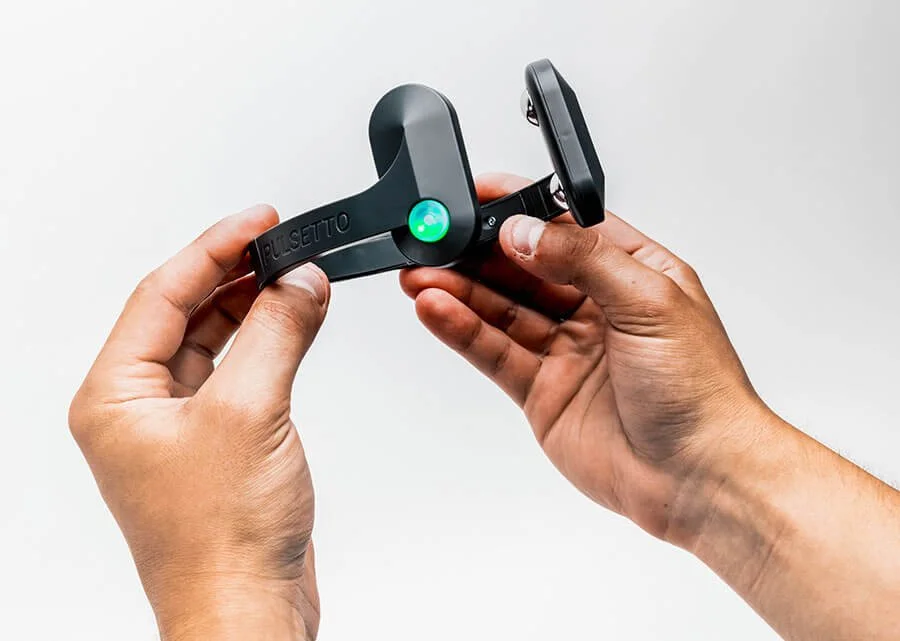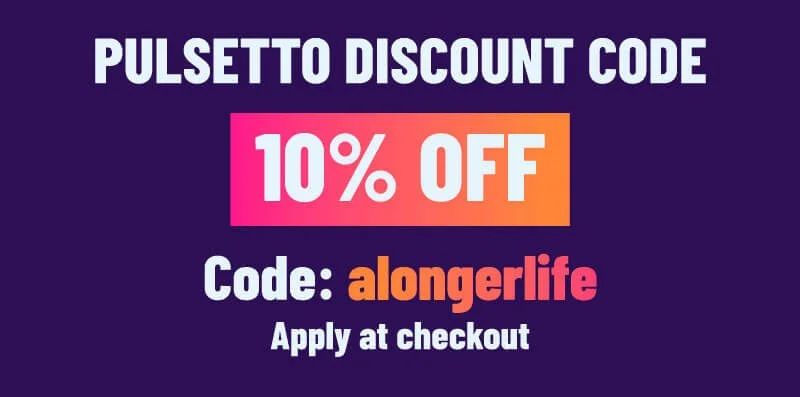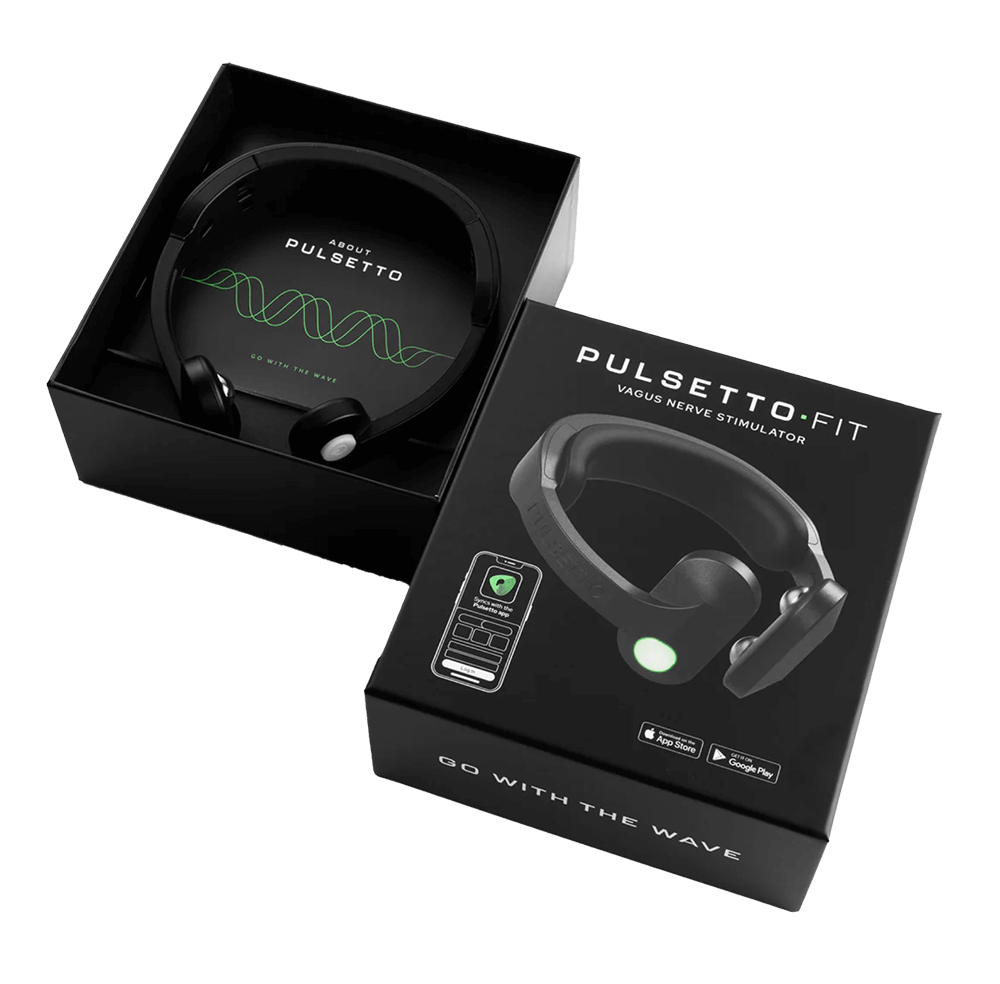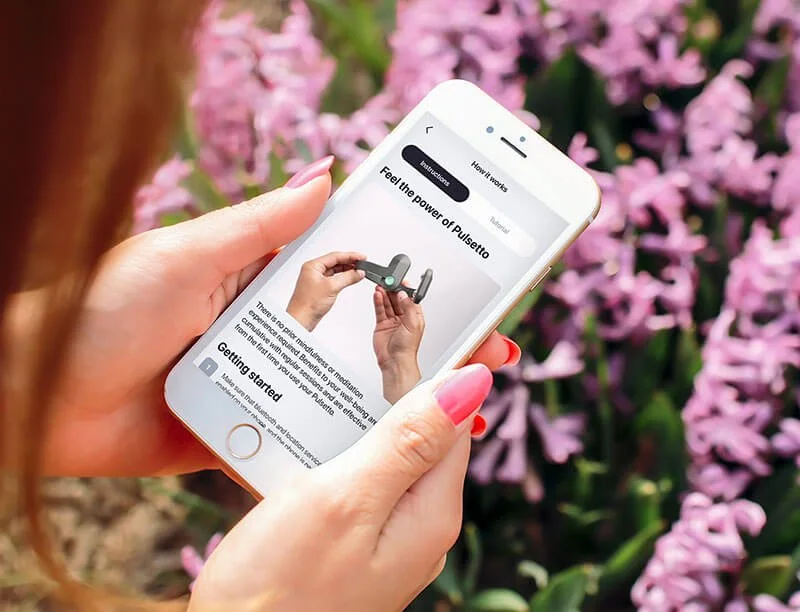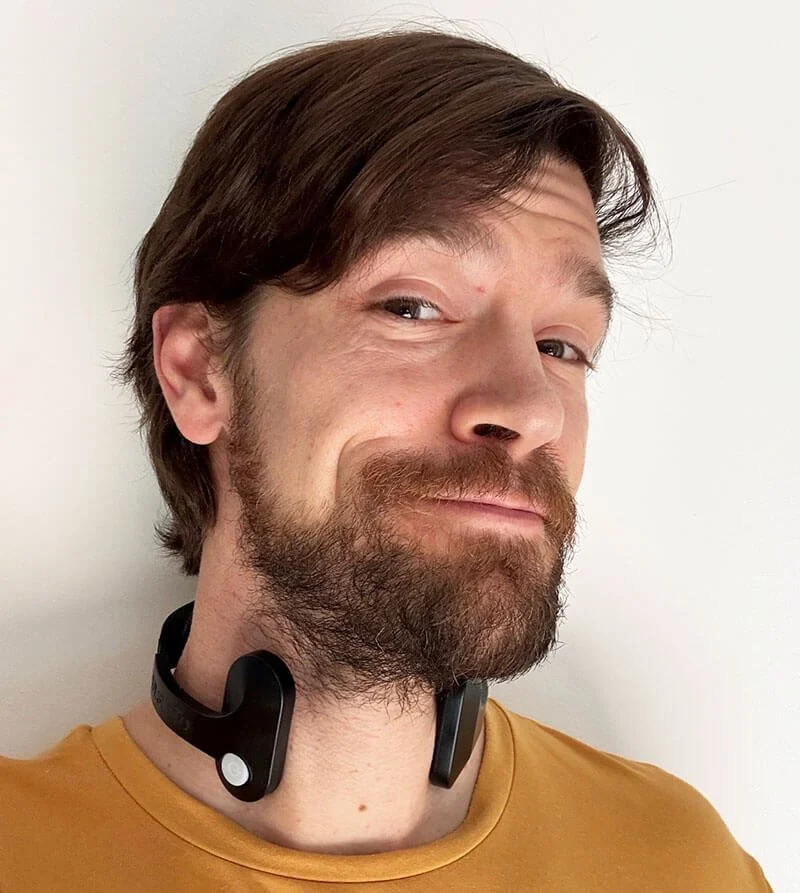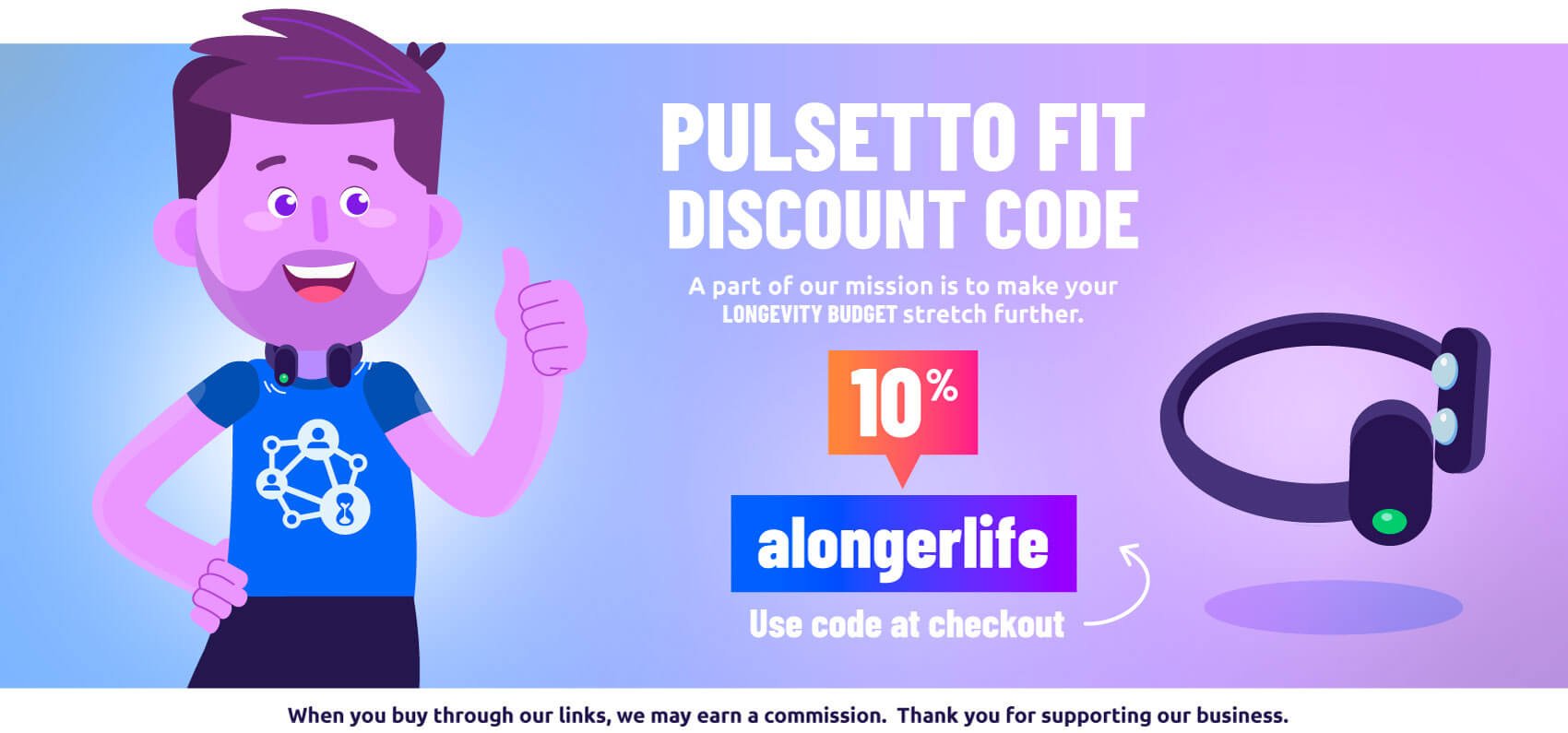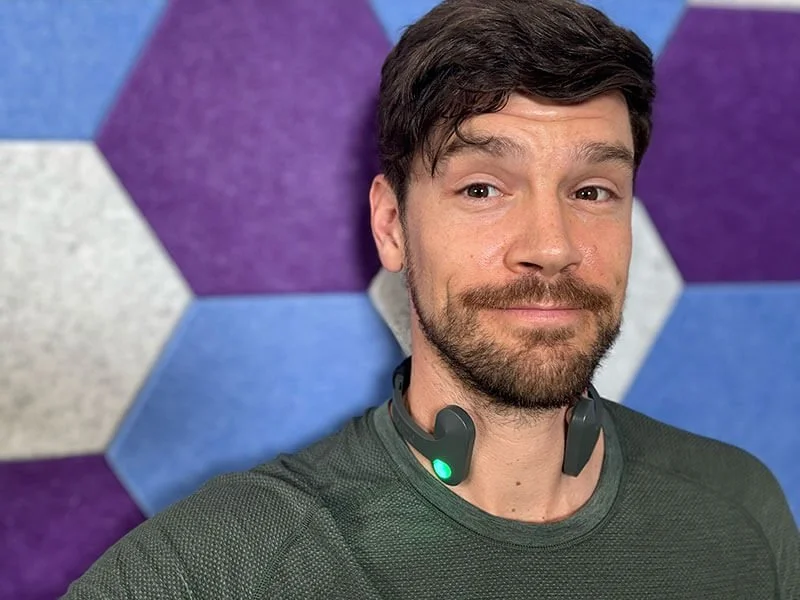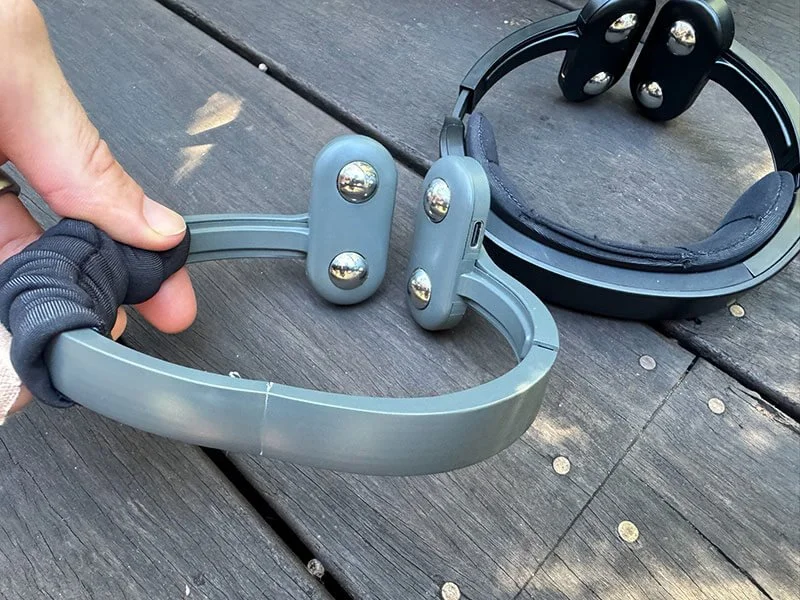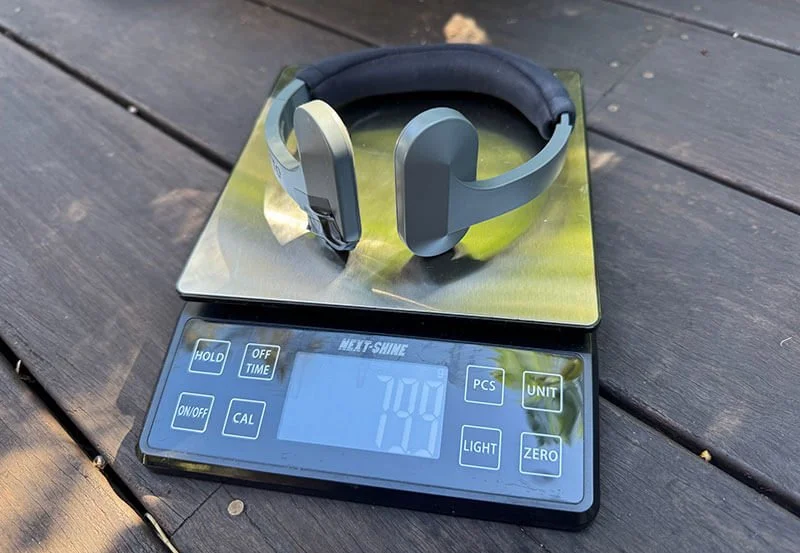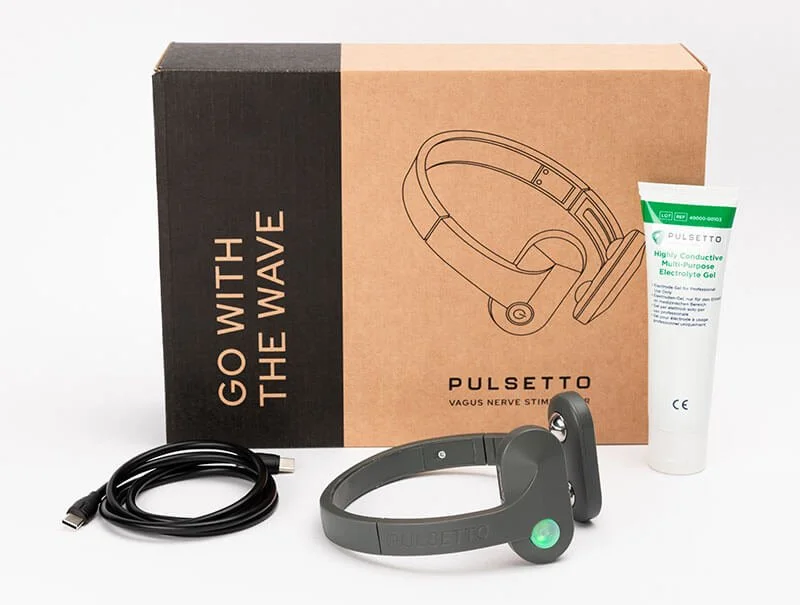Our Pulsetto Fit Review. Does version 2 of this vagus nerve stimulator actually work?
Does the Pulsetto actually work?
This is a question that thousands of people are searching for every month.
Look a bit deeper into why, and it really makes a lot of sense. Who wouldn’t want to access a hands free device that claims it can lower your stress levels and help you sleep better, with just the click of a button and only 10 minutes per day?
It sounds almost too good to be true, which leads many to be skeptical of the device and Pulsetto’s marketing claims. That’s where we come in - in this Pulsetto Fit review, you can count on our no B.S. opinion on the Pulsetto vagus nerve stimulator. With a review of *both* versions of the device (Pulsetto Fit v2 and Pulsetto Lite v1).
For those of you who don’t yet know the basics of how and why the Pulsetto Fit works - we have a wonderful resource available for you in our 1:1 interview with Pulsetto Co-Founder and CEO Povilas.
In this discussion, we tackle many of the basics around vagus nerve stimulation (VNS) and the background science behind the Pulsetto device. Here a few key take-aways from the discussion:
Vagus Nerve Stimulation Promotes Relaxation: VNS targets the vagus nerve, the longest cranial nerve, to activate the parasympathetic nervous system, shifting the body from "fight or flight" to "rest and digest." This helps reduce stress and promote calmness.
Pulsetto’s Wearable Device: Pulsetto offers a non-invasive, at-home VNS device worn on the neck, using electrical currents to stimulate the vagus nerve. It requires electrode gel and typically works within four minutes to induce relaxation.
Improved Sleep Quality: Research and user data suggest Pulsetto can enhance sleep by reducing sleep latency (time to fall asleep) and nighttime awakenings. About 60% of users report vivid dreams, possibly linked to improved REM sleep, though further study is needed.
Stress Reduction Backed by Data: Pulsetto’s app and wearable data show that 86% of users experience reduced stress and anxiety within two weeks, with measurable improvements in heart rate variability (HRV) and resting heart rate, key indicators of stress management.
Personalization is Key: Responses to VNS vary due to individual differences in vagus nerve placement. Pulsetto aims to personalize stimulation by analyzing user data, potentially adjusting frequency and duration for optimal results.
Reviewing Pulsetto Fit - With Caveats
And it is on this very last point, that I want to continue into our review of the Pulsetto Fit and its predecessor (v1, now called the ‘Pulsetto Lite’).
If you explore around for reviews on the Pulsetto Fit or the Pulsetto Lite, you’ll find a wide array of personal experiences. Explore the dozens of tech websites, bloggers, social media posts or even Reddit discussions - and you’ll find just as many different answers to the question “Does Pulsetto actually work?” as you do sources of information.
While this might seem confusing, this actually makes complete sense and is because the effectiveness of vagus nerve stimulation is highly personal. What a given program on the Pulsetto Fit does for your nervous system versus what it does for your friend or favourite wellness blogger may vary widely. You need to keep this in mind - and rely on their 30 day change of mind refund policy (this will be plenty of time for you to self-experiment) to try it out for yourself.
So even if you find someone giving the Pulsetto a poor review because ‘it didn’t work’ or it is ‘completely useless’ or some other tripe - you really should ignore what they have to say, as they’ve completely overlooked this important (and openly admitted) point about VNS efficacy.
With this in mind, let’s take a closer look at the Pulsetto Fit, the Pulsetto Lite and how you might self-experiment with these devices over a 2-3 week period to see if they might work for you.
Pulsetto Fit Review
When it comes to the Pulsetto Fit, there are a few things we want to know right up front. First, do the new features warrant an upgrade for those who own a Pulsetto Lite? Second, for those of you who don’t yet own a Pulsetto, can it really relax your nervous system in just 4 minutes?
Straight out of the box, this is what you’ll first notice about the Pulsetto Fit.
Light weight (~120g), flexible and sleek in appearance
Materials feel strong, soft and smooth with a matte black aesthetic
As compared to the Pulsetto Lite, the Pulsetto Fit feels much more robust and has more tension built into the structure - this means better contact with the skin of the neck
The device has three different sizes large, medium and small
The large size is simply the device worn with out the additional padding
The other two size options are worn with the included padding options
Magnetic attachment option works well and is easy to change
60g bottle of electrode gel is included (in my experience this last for 6-12 months)
With approximately 1 hour of charge time, this is about 7 days of twice daily use (USB C charging)
Pulsetto Fit Hands On Review
As I got hands on with the device, I found myself comparing it to its predecessor, the Pulsetto Lite (v1) which I have a lot of experience using. There are a few important improvements to note:
Improved comfort: The neck padding combined with the improved device tension makes the Pulsetto Fit surprisingly more comfortable to wear than the Pulsetto Lite. I found it felt nice to have on my neck, where the Pulsetto Lite felt a bit cold/foreign.
Better fit: With the adding neck padding, the multiple sizing options and improved tension in the frame, I could clearly feel the Pulsetto Fit living up to its name. It fits so much more securely.
Durability: I noticed a small crack developing in my Pulsetto Lite after 6+ months of regular use (we note this was covered under warranty), so I was grateful to see there was clear improvement in the device durability in the Pulsetto Fit. It feels stronger and more robust, and there is evidence of this in the material design, particularly the thickness of the rearside of the device where my Pulsetto Lite developed a crack (see photos).
Improved Efficacy: Largely driven by the improved fit, there is better contact between the neck skin and the 4 electrodes. This became very apparent to me when I first used the Pulsetto Fit at the same intensity levels as the Pulsetto Lite, but felt the secure contact mean better connection to my neck skin (and thereby the vagus nerve). Interestingly I seem to notice the benefits of the Pulsetto Fit more than the Lite.
Share it: The easy swapping of the neck padding is a significant upgrade in the ability to share the Pulsetto with family or friends. My neck is much larger than my partner’s, but we can still share easily by switching the neck padding.
LED brightness: I am very grateful that Pulsetto added the capability to dim the LED in the power button, as it was far too bright in the Pulsetto Lite for doing sleep sessions in a dark bedroom. Still, without the ability to switch it all the way off, I’ll be adding some tape to block it when I use it in a dark room for sleep.
Battery Improvements: When I consulted the device specifications booklet the Pulsetto Fit and the Pulsetto Lite - there is no change to the battery. They both have the same 350mAh 3.7 lithium battery, making this claim seem questionable. However the Pulsetto team claim this 20% improvement comes from software improvements. I have not been able to verify this claim.
Pulsetto Fit Review of “Does it work?”
The answer for me is a definitive yes. The Pulsetto Fit works, and it works better than the Pulsetto Lite.
The primary reason I cite for the better performance is in the fit of the device, which means the electrodes are much more securely in contact with the surface of my skin and thereby sending the VNS signals required to feel the benefits.
The Pulsetto Fit (and Pulsetto Lite) provide me with the following measurable benefits (none of this is a claim that it will do the same for you):
Decreased sleep latency time. This refers to the amount of time it takes me to fall asleep, which I measure by the number of pages I read on my current kindle sci-fi book. This improvement is also measurable in the sleep latency measure on my Oura ring
Apparent improvements in REM sleep. These are harder to measure in numbers, but I have consistently experienced more vivid dreams and clearer REM cycle sleep signals in my sleep tracking data when using Pulsetto.
Great for on the go relaxation. When at home, my evening wind down routine focused on vagus nerve stimulation, but I do it with with acoustic therapy. I turn to my Pulsetto Fit when I am travelling and don’t have access to my sound bed. The most notable benefits I logged including being able to sleep better when travelling, particularly when I am in a city or a highly stimulating social situation just prior to bed.
A simple add on for meditation. I really like adding in a stress relief Pulsetto session when I meditate. I use it for the first 5-7 minutes, and have subjectively observed that I arrive at a calm focused state more easily than when I don’t do any VNS.
Decreased morning anxiety. I love to put my Pulsetto on first thing in the morning (‘anxiety’ program), to manage my nervous system response to my wake-up cortisol spike. I am prone to feeling a bit too much ‘get up and go’, and the Pulsetto Fit helps relax me into a more manageable start of early morning activation.
Self-experiment to Determine: Does Pulsetto Work (For Me?)
My suggestions to you for determining if the Pulsetto Fit works for you (or the Pulsetto Lite) are to look at the above markers and see which are replicable for you.
Do you have a sleep tracker or keep a sleep journal?
Do you maintain regular sleep routines or patterns, where changes can be isolated?
Are there times where you regularly experience stress or anxiety (like me in the city or in the morning)?
Look for points of friction with your nervous system and your lived experience that happen regularly. Start a simple note on your phone, and keep track of your experience/thoughts over a three week period, specifically focusing on these known friction points (e.g. going to sleep, staying asleep, work stress, family stress, morning anxiety). The first week, take notes before you use the Pulsetto Fit (or Lite), this is your baseline measurement.
Next, get yourself a Pulsetto Fit (or Pulsetto Lite, see below for more), and try it out for two weeks. You’ve got 30 days to test it out, this is plenty of time. Using it twice a day, sandwiching that friction point in between the treatments.
Sleep issues? Try Pulsetto within 30 minutes of bed time on the ‘sleep’ program. Then, use it again in the morning after you wake up. Track your sleep data if you use a wearable, and focus on sleep quality metrics. Pay attention to sleep latency and REM sleep.
Morning anxiety/cortisol spike? Try using Pulsetto on the ‘anxiety’ program right when you wake up, and then again in the late morning. Record your level of anxiety on a scale of 1 to 10 for a week prior and then over two weeks trying this protocol.
Work stress? Instead of reaching for a vice, try wearing your Pulsetto in the afternoon at work and then again in the evening after dinner. Does your family notice any differences? Do you have more patience or willingness to act with self-care? These are good signs you are less stressed
Whatever you choose, follow the guidelines of using it twice per day, for two weeks, and keep track of your results.
Nick reviewing the Pulsetto Fit to see if it helps to reduce stress and improve sleep
A Pulsetto Fit Review: Conclusions
At the end of the self-experiment, you’ll know whether you ship your Pulsetto Fit back to the warehouse (didn’t work for me) or you’ll have a new tool in your nervous system regulation toolbox (like me!) and be very grateful for Povilas and the team at Pulsetto for making it possible to reduce stress and improve sleep at the click of a button!
Overall, I am grateful to see an updated version of Pulsetto. My review of the Pulsetto Fit is overall positive. It is much more robust, fits much better and thereby provides more effective vagus nerve stimulation. The fit is customisable and makes it a much better option for my partner who has a smaller neck.
I appreciate the LED dimming option for sleep programs, but do think they should make it possible to turn all the way off. The durability improvements seem to address my primary concern with the Pulsetto Lite, which cracked on me after about 6 months of use (it still works with a bit of an ad hoc repair job - and the Pulsetto team have replaced it under warranty). In any regard, the two year warranty will see you through.
Lastly with the better fit options, using it while lying down is now a possibility, which is a huge win for sleep hacking with VNS. I could not do this with the Pulsetto Lite as the electrodes would not stay in contact with my neck.
So if you too are captured by the promise of more relaxation, less stress, better sleep and managing your anxiety with an at home device in only minutes a day - The Pulsetto Fit might be a great ‘Fit’ for you. But there’s only one way to find out - you have to test it yourself!
My Pulsetto Lite Review Experience
In follow-up to the above review of the Pulsetto Fit, I am also going to briefly share my experience with the Pulsetto Lite. I have been using the Pulsetto Lite for 9+ months fairly consistently, with a strong preference for using it while I travel or when life stress is picking up.
When I first heard about the Pulsetto, I was admittedly quite skeptical of their marketing claims. There was also a lack of clinical evidence specific to their device, which gave me pause.
However, after my 1:1 interview with Co-Founder and CEO Povilas and getting hands on with the device myself, I found myself pleasantly surprised. Despite seeing other reviews which called the device ‘fizzy and flawed’ or claim there were ‘little to no noticeable benefits’, I embarked on a journey of documenting my own experience.
Within two weeks of consistently using the device before bedtime, I was falling asleep faster and having quite vivid dreams. In fact, I was barely making any progress in my favourite sci fi book at the time, as I started drifting off in just 1-2 pages (where I’d previously read 10+ easily!).
After getting my hands on an acoustic therapy device (more on that to come in future posts), I stopped using the Pulsetto regularly for sleep. Instead, I took an interest in using it for anxiety or work stress. Whenever I would notice that I had a bit of tension in my jaw or chest/abdomen after sitting at the desk, I started putting on the Pulsetto Lite during my short breaks. This also led to noticeable improvements for me, taking my relative stress anxiety score from a 6-7 out of ten to a much more manageable 3 to 4.
Now it has become a go to device for me whenever I start feeling a bit of stress, and also when I travel away from home, I use it for sleep. It is particularly valuable when I am travelling in a high stress situation like a city or a long haul flight changing timezones.
My Pulsetto Lite Review Take-aways
As far the device itself goes and the experience of using the app, here is what I took note of:
Durability: I noticed a small crack developing in my Pulsetto Lite after 6+ months of regular use (which is why I was grateful to see there was clear improvement in the device durability in the Pulsetto Fit). The device doesn’t feel particularly robust.
Fit and Efficacy: I never felt that the Pulsetto Lite fit my neck particularly well. This was notably problematic when laying down, which would push the electrodes up and off my neck. At times, I would have to be pretty finicky with the fit to get all four electrodes to be in solid contact with my skin, but practice makes perfect and over time I got quite good at it.
Battery Life: Recharging the Pulsetto Lite is pretty easy and doesn’t take very long (<1 hour); based on using it once per day, I observed 10-14 days between charging. I found this very reasonable and the app helped me stay ahead of low battery situations by helping me know when to charge
App Experience: The Pulsetto Lite is remarkably easy to use. It connects with no issues on my iPhone 15 and that is a definite bright spot. The app is also straightforward to use, with the most common treatment options (sleep, stress, anxiety) very easy to select, control and start. I personally was annoyed by the pop up reminders telling me to use the Pulsetto more often that required me to acknowledge the notification (don’t tell me what to do, assholes!).
Annoying LED: The least desirable feature of the Pulsetto Lite is the obscenely bright LED that cannot be turned off or down, which contradicts the entire idea of using it for ‘biohacking sleep’. Blue, green and purple lights flashing in the dark while I am trying to get to sleep - do you guys even understand how sleep works (joking!)? You’ll need a pair of blue light blockers OR you can pop some opaque tape over the button like I did.
Pulsetto Lite Verdict
If you can afford it, get the v2 Pulsetto Fit. It is clearly more durable and will likely fit you much better. The Pulsetto Lite (v1) suffers from fitting issues for most people, particularly if you want to use it lying down. It may be that these fitting issues are what drove me to have a crack in mine after just 6 months, raising durability concerns - the Pulsetto Fit addresses these. Also, that really annoying bright LED does my head in - and the Pulsetto Fit wins out again.
However, if you’re not able to afford the price increase - trust that the Pulsetto Lite will address your vagus nerve concerns, noting that you will have to self-experiment to know if it works for you. You’ll just have to be mindful of the durability issues and prepared to be patient with getting the fit right (plus likely not using it while lying down).
Pulsetto Fit vs Pulsetto Lite
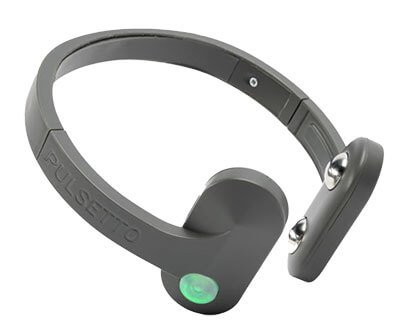 |
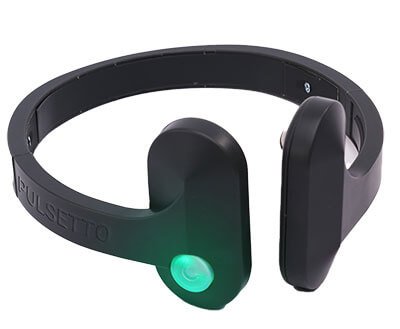 |
|
| Pulsetto Lite | Pulsetto Fit | |
| Functionality / Available Programs | Same | Same |
| Sizing | Single Size | Large, Medium, Small |
| Fit | May not fit some users, particularly with smaller necks | Secure and customizable |
| Comfort | Unpadded, uncomfortable in some situations | Padded, adjustable, comfortable |
| Use in Recline | Electrodes do not stay on neck while reclined | Able to be worn laying down |
| Durability | Less durable, has some vulnerabilities | Improved durability, thicker construction |
| LED function | Not able to be changed (quite bright at night) | Dimmable; better for sleep/dark rooms |
Pulsetto Fit Frequently Asked Questions (FAQ)
The Top 5 OneSkin Questions - Answered!
1. What are the benefits of the Pulsetto Fit for stress and sleep?
The Pulsetto Fit uses non-invasive vagus nerve stimulation. Vagnust nerve stimulation is known to activate the parasympathetic system, reducing stress by up to 64.5%, easing anxiety, and enhancing sleep quality with fewer awakenings. Users often report vivid dreams, reduced fatigue, and better focus. Consistent use also boosts heart rate variability (HRV).
2. How do I use the Pulsetto Fit device?
Apply a pea-sized amount of conductive gel to each side of your neck below the ears, place the hands-free device around your neck, and connect via Bluetooth to the free Pulsetto app. Choose from five programs (Stress, Anxiety, Sleep, Burnout, Pain) lasting 4–10 minutes. Use before bed for sleep or mornings for calm; the app tracks progress and pairs with wearables.
3. Is the Pulsetto Fit safe for everyone to use?
FCC-certified and using ultra-low radiofrequency energy, Pulsetto is safe for most adults with no major side effects reported. Avoid if you have pacemakers, hearing implants, or active medical devices; consult a doctor for sensitivities. Clean thoroughly if sharing, and use personal gel for hygiene.
4. How long does it take to see results from the Pulsetto Fit?
Many feel calmer in 4 minutes per session; noticeable stress relief or better sleep often appears in 1–3 days for those with high stress or fatigue. Healthier users may see HRV gains, focus, and reduced anxiety within 30 days. Daily 4–10 minute sessions maximize benefits, with 86% reporting less stress after two weeks.
5. What makes the Pulsetto Fit different from other vagus nerve stimulators?
Pulsetto’s dual-electrode, hands-free neck design stimulates both vagus branches simultaneously for balanced activation, unlike ear-based (e.g., Nurosym) or handheld (e.g., GammaCore) devices. It’s affordable with no recurring hardware costs, includes a free app with five unlimited programs and custom soundscapes. A 30-day money-back guarantee adds confidence.
6. Is the Pulsetto app free to use?
Yes, the app is completely free with the device, offering unlimited access to five stimulation programs for stress, anxiety, sleep, burnout, and pain, plus a specialized sound library with frequency harmonics. A Premium subscription (with free trial) unlocks custom stimulations and guided meditations. All updates come directly to the app without new hardware.
7. Can I share Pulsetto with others?
Yes, multiple people can use one device, but clean it thoroughly with alcohol wipes before and after each session to maintain hygiene. Each user should have their own conductive gel and app account for personalized tracking and settings. This ensures sanitary conditions and tailored wellness goals.
8. What’s included in the Pulsetto app?
The app provides five unlimited stimulation programs targeting sleep, stress, anxiety, burnout, and pain, plus an exclusive sound library engineered with frequency harmonics and auditory stimuli for deeper relaxation. It integrates with wearables like Oura or Apple Watch to track HRV and heart rate. New features and soundscapes are added regularly at no extra cost.
9. Are there any additional costs or subscription fees?
The Pulsetto device is a one-time purchase with no mandatory fees, subscriptions, or hidden charges; the core app and five programs are free forever. Optional Premium app subscription adds custom stimulations and meditations after a free trial. Extra gel refills are the only potential recurring expense.
10. When can I start feeling the effect?
Effects vary by individual health; those with severe stress, burnout, or sleep issues often feel calmer within 1–3 days, while healthier users notice HRV improvements and focus gains after 30 days. Most experience relaxation in 4 minutes per session; 86% report reduced stress/anxiety after two weeks of daily use. Consistency and proper neck placement accelerate results.
Pulsetto Fit Review: Go Deeper into the Science
A Comprehensive Review of Vagus Nerve Stimulation for Depression
Non-invasive vagus nerve stimulation boosts mood recovery after effort exertion
Vagus Nerve Stimulation for the Treatment of Epilepsy
The anatomical basis for transcutaneous auricular vagus nerve stimulation

